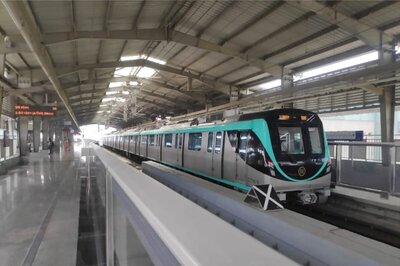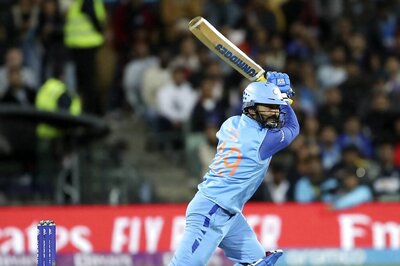
views
Months before the last Lok Sabha elections, a beleaguered Congress-led United Progressive Alliance government conceded the Jat community’s demand for inclusion in the list of Other Backward Classes, entitling its members to reservations in government jobs and educational institutions.
The Maharashtra government, led by the Congress and the Nationalist Congress Party, took a similar decision to provide 16 per cent quota for Marathas on the eve of the assembly polls in 2014.
Both the proposals were meant to woo the powerful Jat and Maratha communities, which were showing signs of deserting the Congress. But the move backfired, both politically and legally.
The Congress failed to make any gains in the elections as both communities were clearly not impressed with the last-minute decision, seen as an act of political desperation. To make matters worse, the decision was struck down by the courts.
Given this past precedent, the big question being asked today is whether the Modi government’s decision to provide 10 per cent quotas in jobs and educational institutions for members of economically weaker sections belonging to upper castes barely a few months before the coming Lok Sabha polls will be accepted or similarly rejected by the electorate as political opportunism.
There is no denying that for the moment, the Modi government has succeeded in changing the current political discourse which had focused on its inability to provide succour to distressed farmers or generate jobs for unemployed youth.
These two issues had dominated the recently-concluded assembly polls in the Hindi heartland states of Madhya Pradesh, Rajasthan and Chhattisgarh, where the BJP was dethroned by the Congress.
Then, the Rafale controversy returned to the headlines in the past week, providing a fresh opportunity to Congress president Rahul Gandhi to attack Prime Minister Narendra Modi, pushing the government on the defensive.
Besides deflecting attention from these issues, this move was also aimed at placating the upper castes who are upset with the BJP for undoing the Supreme Court’s move to dilute the Scheduled Caste and Scheduled Tribe Prevention of Atrocities Act which, they felt, was misused against them.
In fact, the BJP paid a heavy price for appeasing the scheduled castes at the cost of the upper castes in the recent Madhya Pradesh elections. Besides mollifying the upper castes, the BJP is also hoping that the move to provide reservations on the basis of economic criterion will neutralise the anger among the Jats, Marathas and Patels who have been pressing for the inclusion of their communities in the list of OBCs.
On the other hand, there is uncertainty whether the legislation will withstand legal scrutiny as the Supreme Court has capped all reservations at 50 per cent and this new quota would exceed this limit.
Finance minister Arun Jaitley insists that the law will pass muster as the new quota has been implemented by amending the Constitution to ensure the government has the power to provide quotas on the basis of economic weakness, currently not provided for in the Constitution. However, the jury is still out on this point.
As the BJP cranks up its publicity department to propagate the quota Bill as its commitment to the economically weaker sections belonging to the upper cases, its campaign will run into strong opposition from political parties like the Rashtriya Janata Dal and the Samajwadi Party, which have already panned the legislation as a move towards dismantling caste-based reservations.
The coming months will witness a slugfest between the two sides with the social justice parties reminding about the RSS Mohan Bhagwat’s 2015 statement calling for a review of reservation policies which, they said, reflected the BJP’s upper caste mindset. Bhagwat’s remarks had then cost the BJP the Bihar assembly elections as it was seen to reflect the BJP's upper caste mindset.
On its part, the BJP will be at pains to reassure the backward classes and the scheduled castes that the 10 per cent quota is being provided in addition to the reservations already being offered to the OBCs and scheduled castes, which will remain untouched. It will instead hard sell this legislation as a move at poverty alleviation.
Nevertheless, the BJP runs the real risk of consolidating the OBCs and scheduled castes on the other side of the political divide. In the process, its own outreach to the backward classes could hit a roadblock.
The saffron party’s pitch for the OBCs in the 2014 general election had paid it rich political dividend. This was followed by the party’s spectacular electoral success in the 2017 Uttar Pradesh assembly polls due largely to the BJP’s concerted effort to consolidate the non-Yadav backward classes.
The fact that the Prime Minister is an OBC had further helped the BJP’s efforts at social engineering. The Modi government also gave constitutional status to the National Commission for Backward Classes and set up a committee to look at the sub-categorisation of backward classes in a further bid to woo this section. Its latest move, however, has the potential of undoing these efforts.
As for the Congress, it had no choice but to support the Centre’s new quota Bill as it can ill-afford to alienate the upper castes in an election year. Moreover, it had also made a similar promise in its 2014 election manifesto. Besides claiming credit for initiating this move, it will pitch the BJP-led government’s decision as an election “jumla”, an afterthought brought in hastily on election-eve which will be impossible to implement for lack of time and jobs.
A detailed scrutiny of the provisions in the legislation could provide further ammunition to the Congress to hit out at the BJP as it can tap into the anger among upper caste members who fail to qualify for the new quota.
The battle lines are drawn. It has now to be seen which side succeeds in convincing the voter. But today, it is the BJP which has set the agenda while the others are scrambling to respond.
(Author is a senior journalist. Views are personal)
















Comments
0 comment